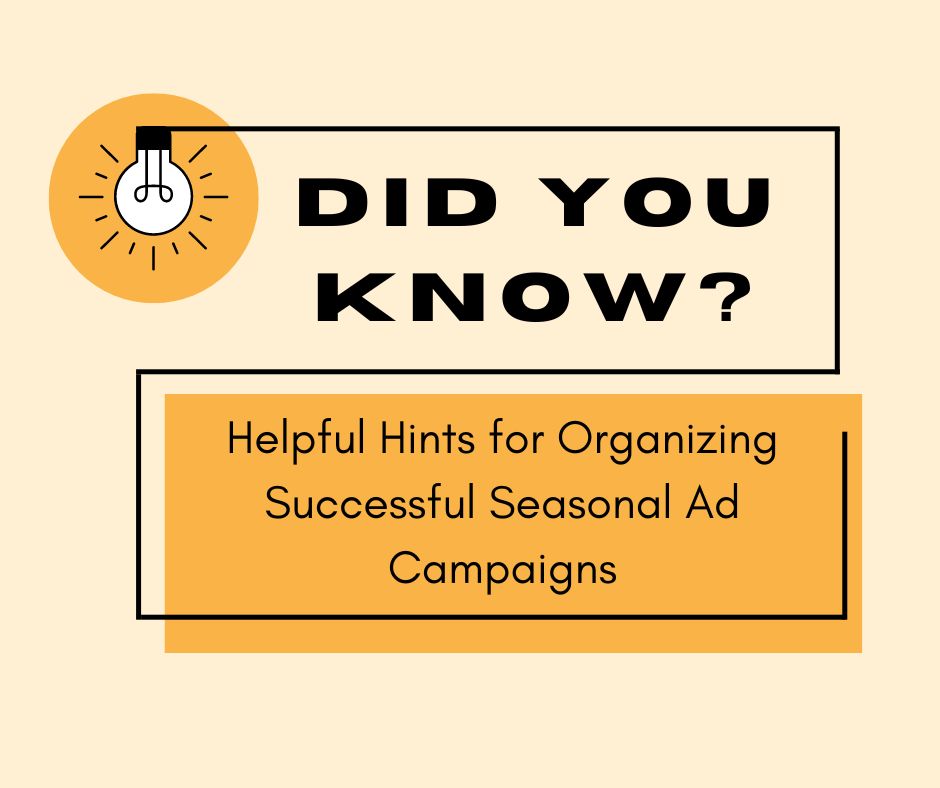The following are some questions to ponder as you begin to create your holiday marketing strategy.
Complete a SWOT analysis to establish a baseline for your marketing strategy and identify potential areas of growth. Having a benchmark to work from will simplify the process of setting objectives and evaluating progress.
- Strengths: What do we excel at? What is effective? What do our clients appreciate about us? What are our advantages?
- Weaknesses: What do we wish to improve/enhance? What areas can we improve our efficiency in? What do our consumers have to say?
- Opportunities: What distinguishes us? What do customers need that we can supply?
- Threats: What could block our progress? What else could our customers look for or purchase?
Make sure your marketing effort is successful by setting SMART objectives to achieve.
- Specific: What are we attempting to accomplish? How will we achieve this objective?
- Measurable: How will success be determined? What metrics must we monitor?
- Attainable: Is this objective attainable? Do we have the necessary tools, skills, and resources?
- Relevance: What is the significance of this goal? How will this goal help us achieve our overall corporate goals? How will this goal help us achieve our overall corporate goals?
- Timely: When are we going to achieve this goal? What is the timeframe?
Who are our ideal clients?
When marketing for the holidays, knowing your target audience is key. You can’t please everyone with your store, but you may improve your marketing efforts by focusing on a specific demographic. Social media users have varying interests and habits, so it’s important to meet your target audience where they already are. Make platform-specific iterations of your assets.
- Who are the best of our clients? Why?
- What demographics are normal for us?
- Where do our clients live?
- How can we assist them in resolving an issue?
- When making a purchase, what do people care about the most?
- Are there any specific data buyers require before they can commit to a purchase?
- When, where, and how do consumers often learn about new products?
What tools can help us achieve success?
Promotional Emails for the Digital Age
To avoid having your email ignored, keep it succinct and use a known sender’s name.
Create a catchy headline for your email. Use a dynamic verb, a numeral, or a question to kick off your sentence. Have some fun, and use your imagination!
Shareable “buy now” buttons that direct customers to a specific product page on your shop’s website are a great way to boost exposure and interaction. The phrases “Shop Our Holiday Must-Haves,” “Start Your Holiday List,” and “Take a Peek at Our Gift Guide” are all excellent examples.
Promotional Strategies for Social Media
You can use the free resources already available on the platforms you’re already using to help with this campaign.
Make a small investment in well-targeted sponsored marketing, such as spending $20 to boost a Facebook post about the “Top 10 Children’s Books to Gift” if the intended audience is parents aged 35–45 living within a 20-mile radius.
Website
- Did you have a dedicated Christmas shopping page on your site that customers could use?
- Can we get an announcement about the campaign featured on the homepage?
Promotional events, freebies, and other fun stuff
Put together a reading wish list or gift guide for the avid readers in your life. Possibly a list titled “Five People in Your Life Who Deserve a Great Read This Holiday Season.”
Make holiday shopping lists and letters to Santa templates available for download or screenshotting to help your consumers remember everyone they need to buy for during the winter season. One of the most effective strategies to boost sales is to assist in identifying and meeting the needs of your customers before they even know they exist.

